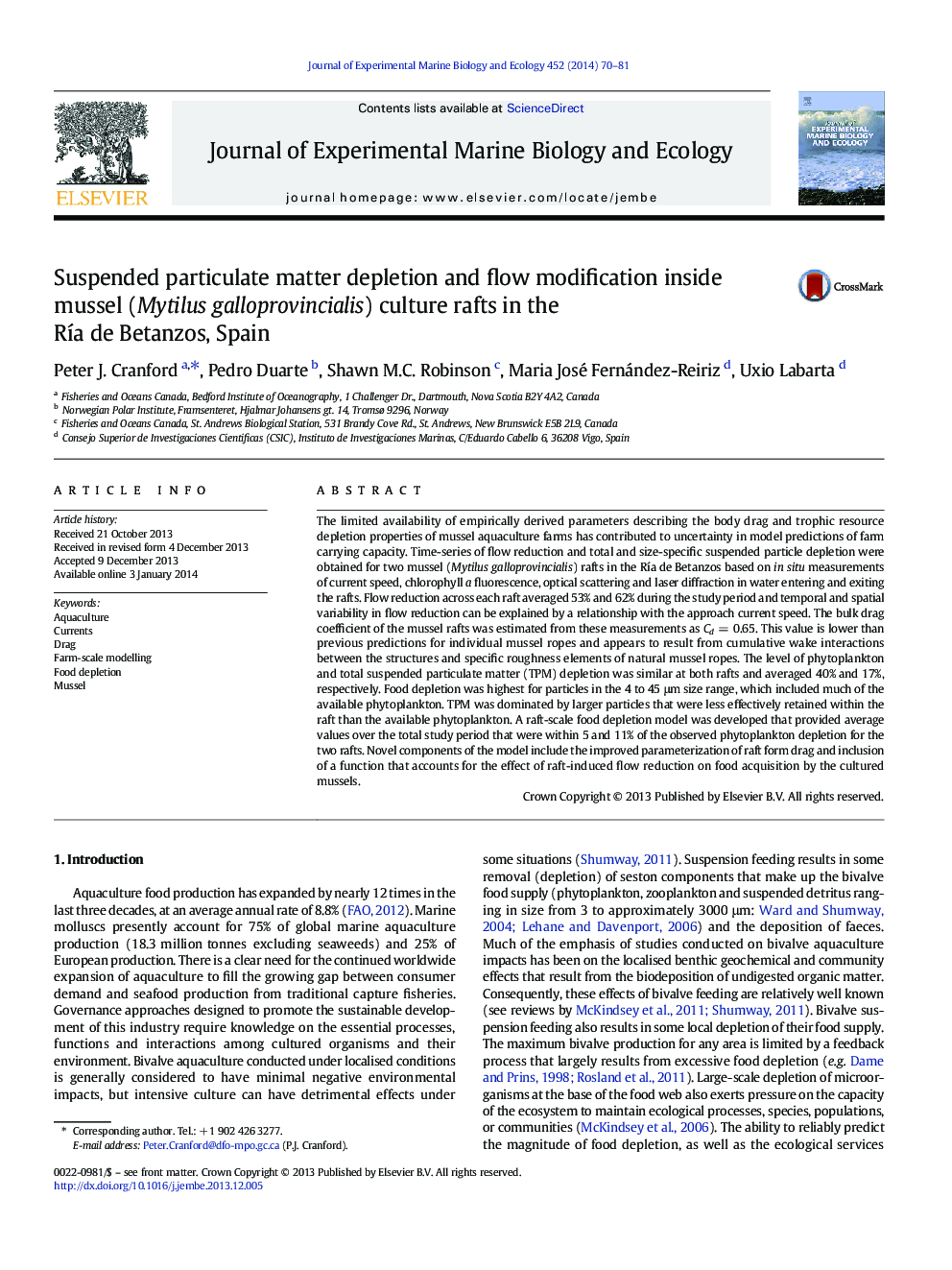| Article ID | Journal | Published Year | Pages | File Type |
|---|---|---|---|---|
| 4395556 | Journal of Experimental Marine Biology and Ecology | 2014 | 12 Pages |
•Flow reduction and particle depletion were measured at mussel rafts in Spain.•Variability in flow reduction was related to the approach current speed.•The drag coefficient of mussel rafts was estimated as Cd = 0.65.•Food depletion averaged 17–40% and was highest for phytoplankton-sized particles.•A food depletion model is described and validated using field measurements.
The limited availability of empirically derived parameters describing the body drag and trophic resource depletion properties of mussel aquaculture farms has contributed to uncertainty in model predictions of farm carrying capacity. Time-series of flow reduction and total and size-specific suspended particle depletion were obtained for two mussel (Mytilus galloprovincialis) rafts in the Ría de Betanzos based on in situ measurements of current speed, chlorophyll a fluorescence, optical scattering and laser diffraction in water entering and exiting the rafts. Flow reduction across each raft averaged 53% and 62% during the study period and temporal and spatial variability in flow reduction can be explained by a relationship with the approach current speed. The bulk drag coefficient of the mussel rafts was estimated from these measurements as Cd = 0.65. This value is lower than previous predictions for individual mussel ropes and appears to result from cumulative wake interactions between the structures and specific roughness elements of natural mussel ropes. The level of phytoplankton and total suspended particulate matter (TPM) depletion was similar at both rafts and averaged 40% and 17%, respectively. Food depletion was highest for particles in the 4 to 45 μm size range, which included much of the available phytoplankton. TPM was dominated by larger particles that were less effectively retained within the raft than the available phytoplankton. A raft-scale food depletion model was developed that provided average values over the total study period that were within 5 and 11% of the observed phytoplankton depletion for the two rafts. Novel components of the model include the improved parameterization of raft form drag and inclusion of a function that accounts for the effect of raft-induced flow reduction on food acquisition by the cultured mussels.
